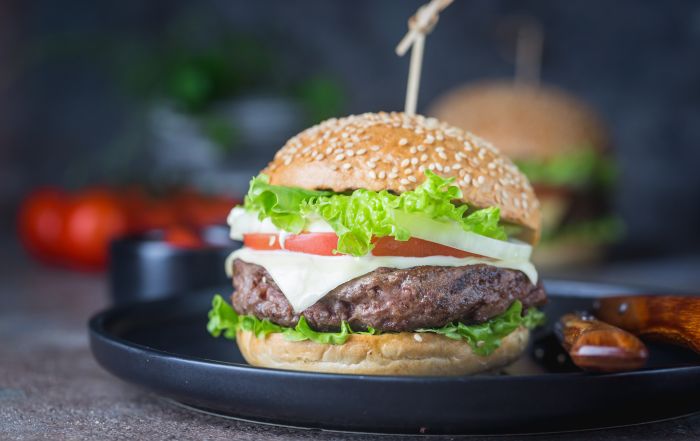Food Defense Plan Resources – at just the right price…
Earlier in the month, I discussed the importance of having a solid food defense plan in place for your foodservice operation. Even if the first version of your plan is not perfect, it is a start. Having plans down on paper will force you to think through the process and ensure the vulnerable points where opportunities exist for possible contamination within the operation are mitigated.
Often, getting started is the hardest part of developing your food defense plan. So, I thought I would compile some resources for you to utilize. There are many good resources available online. However, I often find many of the resources are focused on larger-scale food processing facilities and only a few resources focus on the retail foodservice operation. When I do come across a resource developed for retail foodservice operations, it seems they often forget about, or perhaps maybe do not fully understand, the nuances of running a smaller retail foodservice operation. With this in mind, I have developed a list of resources you might find useful, with a brief description of the resource.
- Guidance for Industry: Food Security Preventive Measures Guidance for Retail Food Stores and Food Service Establishments: This document was prepared by the FDA Center for Food Safety and Applied Nutrition and provides an excellent overview of food defense and recommended actions one should take in a retail foodservice operation. Included within the document is an in-depth self-assessment tool that you could use to review your current practices. Simply walking through the assessment in comparison to your current practices might be an eye-opening experience.
- Food Defense Toolkit (scroll all the way to the bottom of this page): This resource was compiled by the Health Department of Multnomah County, Oregon. Some of the resources include the county logo, but the information is still very good. Their toolkit includes a guide to establish your food defense plan, training handouts, posters, and reporting forms. All of this information was developed for retail food service operations and is easy to understand and use.
While these resources are not perfect and they certainly will not develop your food defense plan for you, they will give you the knowledge and tools necessary to get a good start on your plan.
- A Biosecurity Checklist for School Foodservice Programs: Developing a Biosecurity Management Plan: Yes, this publication is developed for schools, but before those of you who manage restaurants fly over this one, be sure to check it out. While school meal production and restaurant cook-to-order production is quite different, they have similar back-of-house processes and thus the steps to developing your food defense plans can be very similar. The checklist included in the resource is usable by all foodservice operations and can provide a good roadmap to program development and implementation.
- Food Defense Strategies for Food Service Operators: The New York State Department of Health has put this webpage together. While it was last updated in 2018 and it looks to be even a bit older than that, the information is still current. The page includes a Food Defense Strategies brochure and a Self-assessment Checklist that are easy to walk through and understand, even for someone who is just getting started with a food defense plan.
- FDA Food Defense Plan Builder: The Food Defense Plan Builder is a very powerful and, somewhat user friendly, computer application that you download to your desktop/laptop and will help you build your food defense plan. Before you jump into using it, please note that it was designed for full-scale food processing facilities and not retail foodservice operations, such as restaurants and schools. However, with some creative uses of the tools included within the program, you can make it work for a foodservice operation.
While these resources are not perfect and they certainly will not develop your food defense plan for you, they will give you the knowledge and tools necessary to get a good start on your plan. If you think I overlooked a resource that you have found useful, be sure to email it to me and I will update this blog or provide a list of resources in a future blog.
As we are gearing up for summer, please plan to attend the next SafeBites Webinar on July 21, 2021 at 1:00 pm. We have not yet finalized the topic, so if you have ideas, don’t hesitate to email me and let me know. I’d love to include your suggestions and/or answer the food safety questions you have. Likewise, feel free to reach out to any food safety questions you have, and we will research the answer and get back to you. Risk Nothing.
READ MORE POSTS
30 Years Later: The Foodborne Illness Outbreak that Changed Food Safety
In January, we hit a major anniversary. One I am betting snuck by many of you – including me! January marked 30 years since the deadly 1993 E. coli O157:H7 outbreak at Jack in the Box restaurants on the west coast. The anniversary wasn’t on any of the major news networks that I recall. It did make it into a few newspapers, at least one or two of the newspapers that are left. It wasn’t until late-February that I realized it.
Does Temperature Really Matter when Washing your Hands?
In January, I reviewed the changes to the 2022 Food Code in my blog (check out Part I and Part II), and one change to the food code that I had mentioned, but didn’t discuss in-depth, was the change that lowered the water temperature a hand sink was required to produce to 85°F, as noted in Section 2-202.12 of the code. This requirement has been in place since the publishing of the 2001 Food Code, which required a water temperature of 100°F. Prior to this, 110°F was required (see the 1999 Food Code). So why the change and does water temperature when washing your hands really matter?
Hand sinks: Often Taken for Granted, but an Essential Part to Effective Hand Hygiene
Late in January, I received a question about hand sinks in a foodservice operation. The question pertained to school staff (teachers and aides) who were using a hand washing sink in the school kitchen. The question came as a matter of who was allowed access to the kitchen to use the sink, but the question itself caused me to go down a rabbit hole of requirements for hand washing sinks in foodservice operations.
Hot off the Press: The 2022 Model Food Code has been Released! Part Two.
Earlier in the month, we started a discussion about the changes to the 2022 Food Code. If you missed that post, late in December 2022, the Food and Drug Administration released the 2022 Food Code and I wanted to highlight a few of the changes that have been made to the code.










